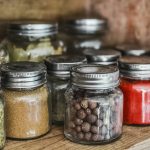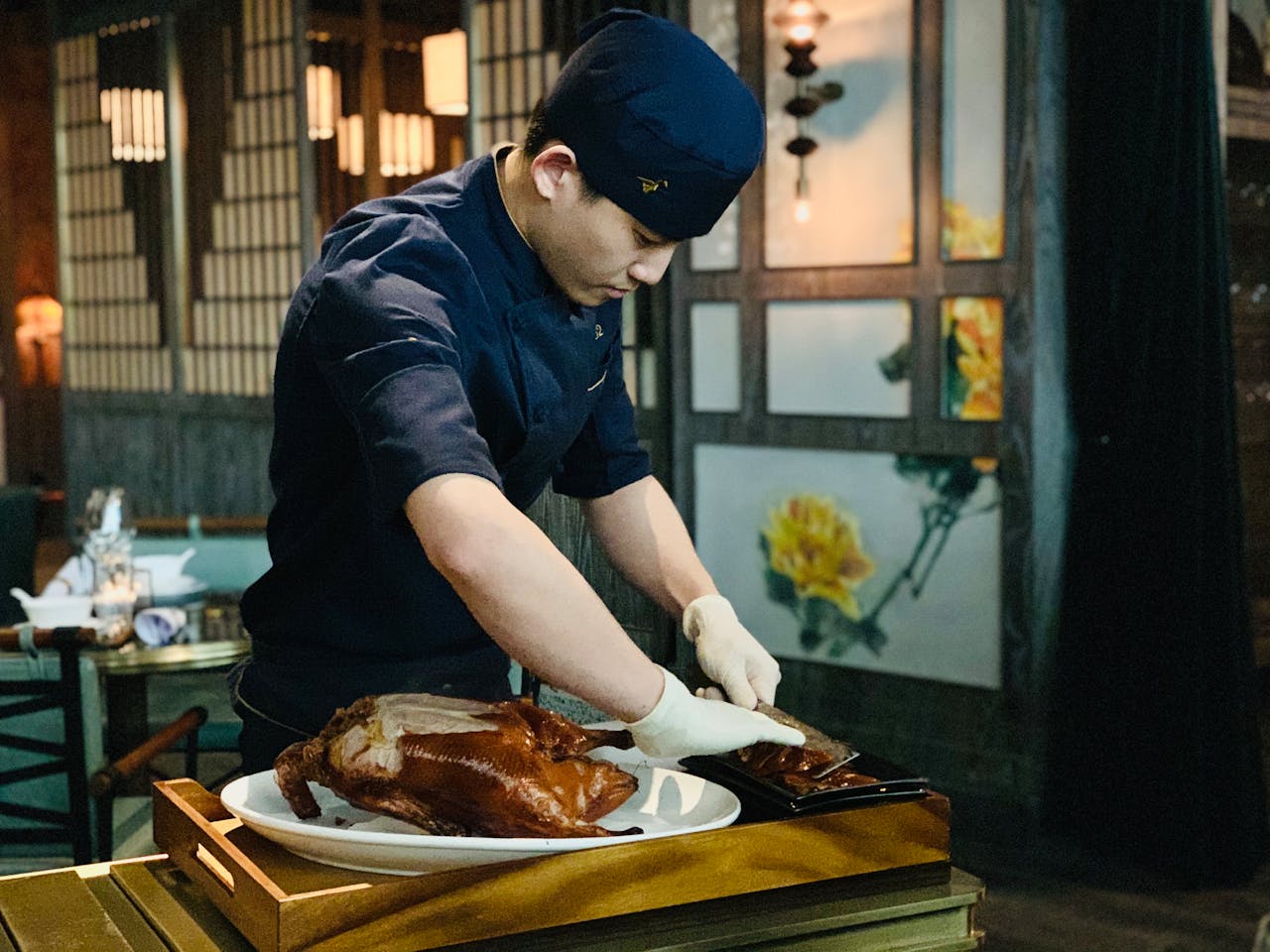It’s a common scene in any kitchen: you’re moving a hot pot from the stove to the table, or pulling a piping hot lasagna out of the oven. You’ve been there, right? The last thing you want is to feel that sudden burn on your hands. That’s where heat-resistant kitchen gloves come in. Whether you’re an amateur cook or a professional chef, having the perfect pair of oven mitts is not a luxury—it’s a necessity.
But not all oven mitts are created equal. The best glove should offer protection, be resistant to heat, and provide a good grip. This article aims to help you choose the most suitable material for your kitchen gloves.
Have you seen this : What are the best practices for recycling kitchen waste?
Cotton Kitchen Gloves
The familiar feel of cotton makes it a popular material for oven mitts. It’s soft, comfortable, and yes, heat-resistant. But is it the best?
Cotton is a natural fiber that offers some degree of heat protection. However, its effectiveness diminishes with prolonged exposure to heat. In other words, if you’re holding onto a hot pot for too long, you’ll start feeling the burn.
In the same genre : What are the best practices for recycling kitchen waste?
Cotton gloves are also susceptible to heat damage. Over time, the cotton fibers can become brittle and less effective at heat resistance. Furthermore, cotton gloves can be a challenge to clean, especially if they come into contact with grease or other cooking materials.
In terms of grip, cotton gloves don’t always offer the best view. They can easily slip when handling slick or wet surfaces.
In light of this, it’s essential to consider other materials that have been tested and proven to offer superior heat resistance, grip, and durability.
Silicone Kitchen Gloves
Enter silicone, a synthetic material known for its impressive heat resistance. Silicone gloves can withstand temperatures up to 500 degrees Fahrenheit, far surpassing the limit of cotton gloves.
Silicone mitts are also highly resistant to water and grease, making them easy to clean. You can simply toss them in the dishwasher or wipe them clean with a damp cloth.
When it comes to grip, silicone gloves are the clear winners. They typically feature a textured surface that ensures a secure hold on hot pots and pans. This is a major advantage when you’re dealing with hot and potentially slippery kitchenware.
However, silicone gloves do have a few drawbacks. Some users find them to be less comfortable than cotton gloves. They also lack the breathability of cotton, which can lead to sweaty hands during prolonged use.
Aramid Fiber Kitchen Gloves
A newer player in the kitchen glove market is aramid fiber. You might not be familiar with this material, but it’s commonly used in firefighting suits and aerospace technology, where heat resistance is a critical requirement.
Aramid fiber gloves can often withstand temperatures up to 1,500 degrees Fahrenheit, making them the most heat-resistant option on our list.
While aramid fiber gloves offer unbeatable heat resistance, they also offer excellent grip. Many designs include silicone strips or patches to further enhance the grip, making these gloves a top choice for handling hot items in the kitchen.
On the downside, aramid fiber gloves can be more expensive than their cotton and silicone counterparts. They can also be bulkier, which might affect dexterity.
Combination Kitchen Gloves
Given the strengths and weaknesses of each material, many manufacturers have started to combine materials to create the ultimate kitchen glove.
These gloves often use a blend of cotton, silicone, and aramid fibers to deliver the best of all worlds. They provide superior heat resistance, excellent grip, and the comfort of cotton. Plus, the use of silicone makes them easy to clean.
These combination gloves represent the next generation of heat-resistant kitchen gloves. Through a clever mix of materials, they deliver the protection you need without sacrificing comfort or grip.
How to Choose the Right Kitchen Gloves
Choosing the right kitchen glove is about more than just picking the most heat-resistant material. You also need to consider the fit, comfort, and grip of the glove.
When selecting a glove, make sure it fits well. A glove that is too loose may slip off, while one that is too tight could restrict your movement.
Comfort is also key. Look for gloves that are lined with a soft material, such as cotton, to provide a comfortable feel.
Finally, pay attention to the grip. The glove should have a textured surface or silicone strips to ensure a secure hold on hot items.
In conclusion, while cotton, silicone, and aramid fiber each have their merits, the best material for heat-resistant kitchen gloves depends on your specific needs and preferences. Whether you’re an amateur cook or a grill master, there’s a glove out there that’s perfect for you.
Leather Kitchen Gloves
Leather has been a long-time favorite for heat-resistant gloves, especially for those who enjoy barbecuing or grilling. Leather gloves are often made from cowhide, which is renowned for its natural durability and heat resistance.
Leather gloves, like their aramid counterparts, can withstand high temperatures, often up to 1,200 degrees Fahrenheit. This makes them a safe choice for tasks involving high heat, such as managing a charcoal grill or handling hot cast iron cookware.
In terms of comfort, leather gloves usually have a cotton or terry cloth lining that adds a layer of softness and heat protection. This feature also increases the gloves’ ability to absorb sweat, enhancing comfort during extended use.
When it comes to grip, leather gloves often come with added textures or patterns on the palms and fingers to ensure a secure hold on items. However, they might not provide as much grip as silicone mitts or aramid gloves with silicone patches.
One point to keep in mind when considering leather gloves is their care. Unlike silicone gloves, leather gloves aren’t suitable for a dishwasher and might require special cleaning solutions.
Despite the extra care, leather gloves’ robust construction often translates into long-lasting usage, making them a potential investment for serious eats enthusiasts.
Neoprene Kitchen Gloves
Neoprene gloves are another excellent choice for heat-resistant kitchen gloves. This synthetic rubber material is resistant to both heat and chemicals, which means it can double as a protective glove for cleaning tasks.
Most neoprene gloves can resist temperatures up to 500 degrees Fahrenheit, similar to silicone oven mitts. They are also waterproof and resist oil, making them easy to clean, much like silicone gloves.
Neoprene kitchen gloves come with a textured surface, which provides a good grip on wet or greasy items. This makes them a reliable option for handling any task in the kitchen, from pulling out oven trays to handling boiling pots.
Neoprene gloves often come with a cotton lining for extra comfort. However, they might not breathe as well as cotton gloves, which could lead to sweaty hands over prolonged use.
Despite their heat resistance and grip, it’s worth noting that neoprene gloves may not offer sufficient protection for tasks involving extreme heat, such as handling hot charcoal or cast iron pans. For those duties, gloves made from aramid fibers or leather might be a better choice.
Conclusion
Heat-resistant kitchen gloves are a must-have tool for any cook or grill master. With an array of materials available, each with their strengths and weaknesses, choosing the right pair might seem daunting. Yet, the key is to consider the tasks you’ll be performing most frequently.
Traditional cotton gloves offer comfort and breathability but might not provide sufficient heat protection for tasks involving high temperatures. Silicone and neoprene gloves excel in heat resistance and easy cleaning but may not be the most comfortable or breathable options. Aramid fiber and leather gloves offer superior heat resistance and durability, making them ideal for handling extremely hot items or tasks involving intense heat.
Remember, the right glove is not just about heat resistance. You need to consider other factors such as fit, comfort, grip, and care instructions. Whether you prefer the familiar feel of cotton, the easy cleaning of silicone, the high heat resistance of aramid fibers, or the durability of leather, there’s a kitchen glove that’s perfect for you.
And remember, safety first: Always use heat-resistant gloves when handling hot items in the kitchen. Don’t risk a burn – stay protected with the right pair of oven mitts or pot holders. Happy cooking!






